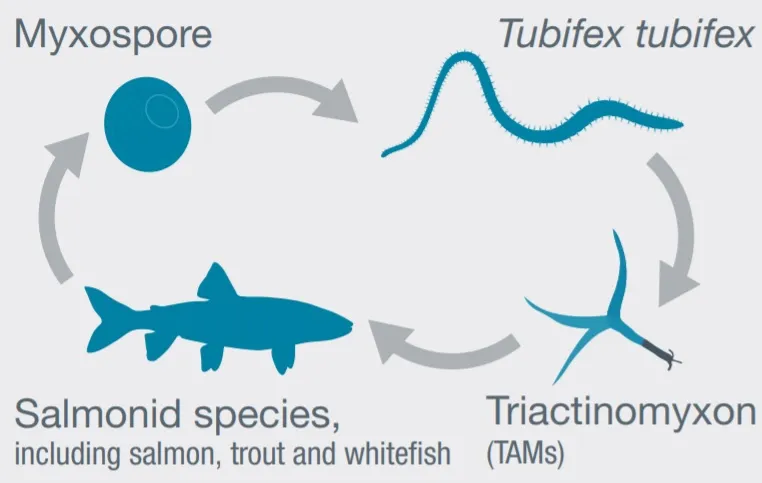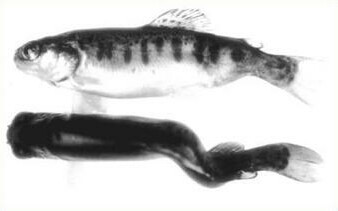The New Mexico Department of Game and Fish reported whirling disease during the annual fish health testing within Rock Lake State Fish Hatchery in Santa Rosa. The cause of how the fish were exposed to the disease is still under investigation.
This discovery led to 70,000 fish being euthanized at the hatchery, and concerns for stock levels around the state are now present. The Rock Lake State Fish Hatchery produces 300,000 a year for stocking statewide and is the state’s primary catchable trout-rearing station.
Whirling disease is a condition caused by a microscopic parasite, myxobolus cerabralis, that affects trout and salmon species. The symptoms of the disease are blackened tail, whirling behavior, and deformities in the head and spine of fish. Though whirling is fatal to fish there is no known cure and does not pose a threat to human health.
According to the New Mexico Department of Game and Fish, the spores, which are technically the beginning phases of the disease, first must be eaten by their intermediate host, the tubifex worm, to alter form into a Triactinomyon, or TAM. Once released by the worm into the water, TAMs hook onto passing fish and burrow into the nervous system.

The microspores will catch a ride on anything from birds, to bears, boats, boots, or anything that moves from one body of water to the next. No subzero temperatures or droughts will effectively kill the disease.
This is the first time since 2007 that this certain parasite was found in any state hatchery waters, however, it has been found in other waters in the state. The U.S. Forest Service stated that whirling disease is also present in the waters of the Santa Fe National Forest.
The U.S. Forest Service shares that the disease was first found in New Mexico in 1998 and is a parasite that originated in Europe and came from brown trout. Though the disease originated in that species of trout, they are less susceptible to getting the disease now, however, rainbow trout and other native trout species are at a greater risk for becoming infected.
Ryan Darr from the New Mexico Department of Game and Fish answered questions from the NM Political Report, he said that the water flows through concrete troughs and is not recirculated through any other part of the hatchery.
However, in the series of these concrete raceways, it is possible that the upstream units can contaminate the ones downstream. The fish that were affected and then euthanized at the facility were about six to ten inches long and from 10 to 15 months of age, according to Darr.
He also mentioned that it is possible that some of the infected fish may have been stocked in other waters in New Mexico; however, many of the waters in the state are already infected with whirling disease, so these areas will not be affected by these specific hatchery fish.
According to Mike Sloane, assistant chief of fisheries in New Mexico, “lots of habitat in New Mexico is not supportive of whirling disease. Most of our cold streams are fast-moving, and tubifex worms need muddy backwater.”
Disease susceptibility and environmental variables in both the tubifex and fish, as well as timing factors, are all being researched to determine fully how this disease spreads.
Researchers have shared that in Montana, a disease caused the Madison River to lose 90% of rainbow trout stocks in 1994- which is thought to be whirling disease.
Read more about whirling disease affecting New Mexico.







